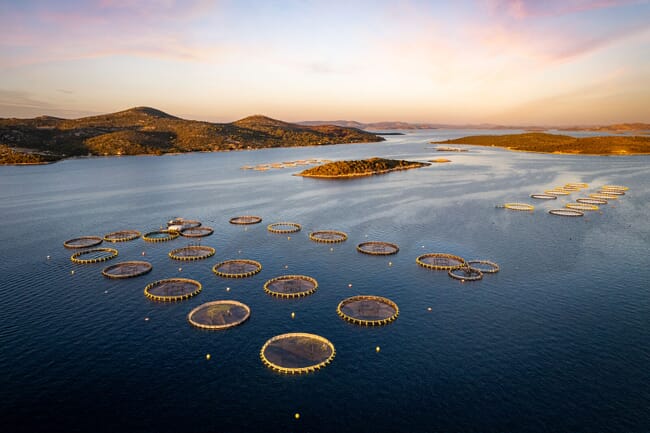
Led by researchers from the University of Miami, New York University, and Oceana – an international advocacy organisation – the study assessed the fish-in:fish-out (FI:FO) ratio of the global aquaculture industry – a metric which quantifies the industry’s output against its input.
Previous estimates placed the ratio of wild fish inputs to farmed fish outputs at around 0.28, whilst this recent re-evaluation estimates this ratio to be between 27 to 307 percent higher. The study found that for carnivorous farmed species, such as salmon or trout, wild fish inputs are likely to be double the farmed fish biomass output.
“Our study reveals that the aquaculture industry relies more heavily on wild fish extraction than previous research has suggested. This demonstrates the scale at which aquaculture could be impacting marine ecosystems,” said Spencer Roberts, a PhD researcher at the University of Miami, in a press release.
The research team's approach included accounting for previously overlooked sources of wild fish in aquaculture feed, such as trimmings and byproducts from wild-caught fish. They also incorporated collateral fishing mortality, such as the large quantities of bycatch which are returned to the sea but which do not survive. By analysing multiple industry-reported datasets, the team provided a range of estimates and highlighted uncertainties in current reporting practices.
“This research shows that the assumptions we have made about carnivorous aquaculture have been too optimistic, and is another reason to think strategically about the kinds of aquatic species it makes the most sense to mass produce," said Jennifer Jacquet, a co-author of the study.
Dr Patricia Majluf, a senior scientist with Oceana, states that, whilst there is an increasing use of alternative aquafeed ingredients throughout the industry, this has not led to a reduction in the use of wild-caught fish in the production of fish meal.
“The offshore aquaculture industry is growing so rapidly that the wild-caught fish is not being replaced in their feed. Instead, other feed sources are just supplementing wild fish use," she said.
Whilst the researchers highlight that more research into this topic is needed in order to gain a comprehensive understanding of the issue, the study’s findings have significant implications for policymakers, stakeholders, and the future of the global aquaculture industry.




